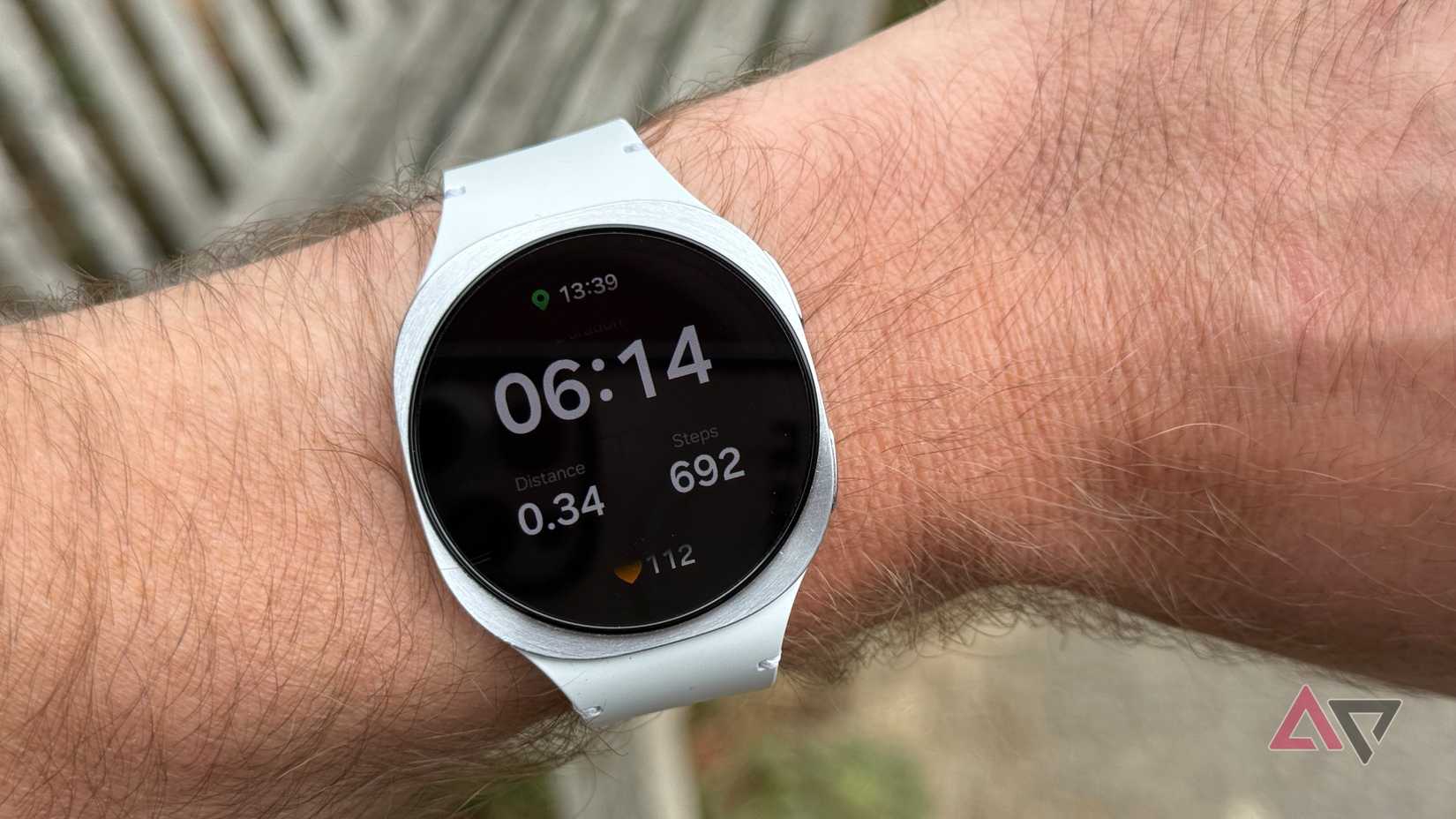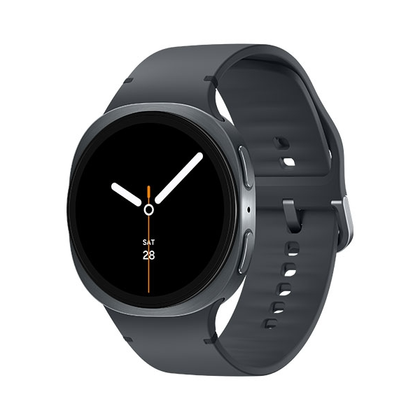Which top 2025 smartwatch should you buy, the Samsung Galaxy Watch 8 or the Google Pixel Watch 4? I’ve worn both over the last months, and here’s my buying advice.
The good news is that you can’t go wrong with either, but as you’ll discover, some crucial differences may make one more suitable for you than the other.
Design differences
It’s all about character
Both the Google Pixel Watch 4 and the Samsung Galaxy Watch 8 come in two case sizes: 41mm and 45mm for the Pixel Watch, and 40mm and 44mm for the Galaxy Watch 8.
While this provides choice, it’s the thickness of the case that will have a greater impact on everyday wear.
The Galaxy Watch 8’s 8.6mm case practically disappears on your wrist, and it’s so comfortable to wear with long sleeves.
The Pixel Watch 4’s 12.6mm thick case isn’t intrusive, but I noticed it in more situations than the Galaxy Watch 8.
Both weigh about the same, and the straps attach using a proprietary clip system. The strap end tucks under the clasp to keep it neat, but I didn’t find one more comfortable than the other.
I love the Galaxy Watch 8’s sapphire crystal over the screen, giving it not only a lovely sheen but more durability and crucially, a more tactile touch surface than the Pixel Watch 4’s Corning Gorilla Glass 5.
The shape of each smartwatch differs a lot. I didn’t expect to like the Galaxy Watch 8’s cushion style, but after wearing it, its unique character soon won me over. The Pixel Watch 4 has no such design character, and it looks very plain next to the Galaxy Watch 8.
The Pixel Watch 4’s physical rotating crown beats the Galaxy Watch 8’s virtual rotating bezel (it recognizes touch around the edge of the screen) for tactility, but Samsung’s feature still works surprisingly well.
Both smartwatches have an IP68 dust and water resistance and aluminum cases, but only the Galaxy Watch 8 meets MIL-STD-810H toughness standards. For design, tactility, materials used, durability, and comfort, the Samsung Galaxy Watch 8 beats the Pixel Watch 4.
Software and performance
Surprisingly close
Both the Pixel Watch 4 and the Galaxy Watch 8 use Google’s Wear OS 6 software, which Samsung enhances with its own One UI 8 Watch interface.
The operating system is basically the same, with a series of Tiles showing key data, a swipe-down panel for Quick Settings, and a screen showing all available apps.
On the Pixel Watch 4, you swipe up to see notifications, but they’re found with a swipe to the right on the Galaxy Watch 8.
I really like Google’s presentation of Wear OS 6, with its large, easy-to-tap buttons, clever use of space, and the way data adapts to the curve of the circular screen.
It’s less polished on the Galaxy Watch 8, where One UI 8 Watch isn’t all that different from previous versions. Google has definitely made a step forward with Wear OS on the Pixel Watch 4.
Neither has a good collection of standard watch faces, making it harder to avoid paying for a third-party watch face or app collection.
While the AMOLED screen resolution is different on each smartwatch, the pixel density is very similar, as are the peak brightness levels. I haven’t been able to spot any meaningful differences between them.
The processors are also different. The Pixel Watch 4 has a Qualcomm Snapdragon W5 Gen 2, and the Galaxy Watch 8 has Samsung’s Exynos W1000.
I haven’t noticed any performance difference. However, Wear OS’s animations and scrolling have a “snappier” feel on the Galaxy Watch 8, compared to the smoother animations and scrolling on the Pixel Watch 4.
It doesn’t change the way each watch performs, but the Watch 8 does feel like you get to the data you want a little faster.
Fitness tracking and apps
Almost nothing between them
The Pixel Watch 4 connects to Google’s Watch app and Fitbit, while Samsung has its own Wear app and Samsung Health.
I’ve used them both for several weeks and found no problems with initial connection and ongoing syncing. I’ve also swapped between phones and found the process simple.
Samsung Health is entirely free, but Fitbit offers a Premium option, which adds extra data, insights, and workout plans. It costs $10 per month.
Samsung Health doesn’t miss out on these features and simply includes them. Purely by not including a subscription option, Health beats Fitbit.
Tracking a simple walking workout with both smartwatches revealed no significant difference in step count, heart rate, and average calorie burn.
When I tracked sleep with both, they matched the results I regularly get from my Oura Ring 4. Samsung provides a few extra wellness features, such as its Antioxidant Index, but these won’t appeal to everyone.
The Samsung Health app has a great design, and although it’s very data-heavy, it’s no more so than Fitbit.
Fitbit’s design is slightly less successful and requires more initial setup. After you’ve spent time getting it working the way you want, it’s easy to live with.
Setting up the Tiles on the smartwatch is also key to getting the most out of the fitness tracking. Because both operate in the same way, you can make them as fitness-oriented as you like.
Both are excellent health and fitness trackers, but the Galaxy Watch 8 edges out the Pixel Watch 4 purely because it does not require an additional payment to see all your data.
Battery life and charging
Google fights back
I was surprised by the Pixel Watch 4’s battery life. With the always-on screen active, plus tracking both sleep and activity, the 455mAh battery lasts up to three days on a single charge.
The new charging dock is handy, and it takes an hour to fully charge the battery, with a 50% charge taking about 15 minutes.
I tested the smaller 40mm 325mAh Galaxy Watch 8, and the battery lasted for a day with sleep tracking and the always-on screen. Reports suggest the 44mm Galaxy Watch 8’s 435mAh battery lasts between two and three days.
Charging is a little slower, and it takes up to 80 minutes to fully charge. It also has a 20-minute fast charge feature to add around 45% to the battery.
Neither smartwatch’s battery will last for a weekend away on a single charge, especially if you choose the smaller case size.
However, because the Pixel Watch 4’s charging dock serves a purpose, you won’t mind taking it with you, unlike the ordinary plinth you get with the Galaxy Watch 8.
I was less focused on the Pixel Watch 4’s battery life when I used it, and found that it recharged faster, too.
Which smartwatch to buy?
Only one smartwatch can find its way onto your wrist, and I think both the Google Pixel Watch 4 and Samsung Galaxy Watch 4 are excellent buys.
However, if it were my money, I’d choose the Samsung Galaxy Watch 8. I’d also choose the smaller 40mm version, despite the short battery life. It’s supremely wearable, incredibly comfortable, and really cool to look at on your wrist.
Google Pixel Watch 4
- Case size
-
41mm / 45mm
- Case Material
-
Aluminum
- Display
-
AMOLED
- CPU
-
Snapdragon W5 Gen 2
- RAM
-
2GB
- Storage
-
32GB
Samsung Health doesn’t come with any subscription package, and there are a few added value wellness features onboard. Both have essentially the same software, but I do marginally prefer the way Samsung tunes its performance over the Pixel Watch 4.
When both start at the same price, $350, my money would go on the wonderfully 70s-looking Galaxy Watch 8.
Samsung Galaxy Watch 8
- Case size
-
40mm/44mm
- Display
-
1.3-inch/1.5-inch Super AMOLED
- Display resolution
-
438 x 438
- CPU
-
Exynos W1000
- RAM
-
2GB
- Storage
-
32GB






